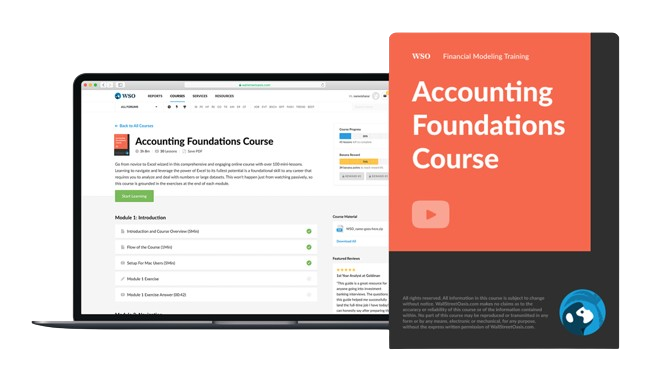Revenue Recognition
This principle describes that you should only record the revenue when it has been earned and not when the related cash is gathered
What is Revenue Recognition?
Revenue Recognition is a generally accepted accounting principle (GAAP) that determines the particular conditions in which the revenue is recognized and identifies how to present it. It is recognized when a critical event occurs, and the amount is easily measurable.
This principle describes that you should only record the revenue when it has been earned and not when the related cash is gathered. As per the principle, revenues are recognized when they are realized and earned, no matter when the cash is received.
It requires that revenue is recognized when the delivery of guaranteed goods or services matches the amount expected by the firm in return or exchange for the goods or services.
It is a foundation of accrual accounting along with the matching principle. They both identify the accounting period in which the revenues and expenses are recognized.
In many industries, various events associated with these processes can be challenging to establish precisely when revenue should be recognized. And in such conditions, these guidelines are used efficiently to identify and report the financial statements.
- Revenue Recognition is a principle in accounting (GAAP) that dictates when and how revenue should be recorded based on earned income, not just cash received.
- Revenue is recognized when goods or services are delivered and their value is easily measurable, even if payment is deferred.
- Proper revenue recognition is essential for precise financial statements, aiding investors and auditors in assessing a company's performance.
- Businesses use methods like sales basis, percentage of completion, installment, completed contract, and cost recoverability to align with their business models.
- Deferred Revenue also known as unearned revenue, this arises when payment is received for services not yet provided, creating a liability until the service is delivered.
Understanding Revenue Recognition
Revenue is the core of business performance and execution. Everything relies on the deal. As such, regulators know how tempting it is for firms to push the limits on what qualifies as revenue, particularly when not all revenue is collected when the work is finished.
Revenue accounting is fairly straightforward when an item is sold, and the revenue is recognized when the consumer pays for that particular item.
Accounting Standards Codification® (ASC) 606 's revenue recognition standard gives a uniform system for recognizing revenue from client contracts.
These standards are different for different companies based on their company's accounting method, geographical location, whether it is a public or private entity, and many other factors.
It looks to answer when a company has earned its revenue. Revenue is recognized after the performance obligations are fulfilled, and the dollar amount is measured easily for a company.
A performance obligation promises to offer consumers a "distinct" product or service. It might look simple, but a performance obligation being fulfilled may vary depending on various factors.
Conditions for Revenue Recognition
As per the IFRS standards, for revenue to be recognized, the following conditions must be satisfied, and they are as follows:
- Risks and rewards/compensations of ownership have been moved from the seller to the buyer.
- The seller will lose control over the goods that are sold.
- The collection of payment installments from goods or services is sensibly guaranteed.
- The amount of revenue can be sensibly estimated.
- Costs of revenue can be sensibly estimated.
Conditions (1) and (2) are related to the performance. Regarding performance, it happens when the seller/dealer has done what is expected and has to be qualified for installment.
Condition (3) describes collectability. The seller must have a sensible expectation that they will be paid for the performance.
Conditions (4) and (5) refer to measurability. Due to the accounting principle of the matching principle, the seller must be capable of matching the incomes with the expenses. Thus, both the revenues and costs should be able to be sensibly estimated.
Steps in Revenue Recognition from Contracts
The central guideline of the revenue standard is to portray the transfer of guaranteed goods or services to consumers in an amount that reflects the consideration to which an element expects to be entitled in return for those goods and services.
There are five steps of the process that an element applies to decide when and how much revenue must be recognized.
Step 1: Identify the contract with a client: In this step, both parties should support the contract (whether it may be written, verbal, or suggested).
Step 2: Determining the performance obligations: Some contracts may include more than one performance obligation. Performance obligations should be particular from one another. The following circumstances must be satisfied for a good or service to be distinct:
- The purchaser (customer) can profit from the goods or services all alone.
- Therefore, the good or service is separately determined in the contract.
Step 3: Examining the transaction cost: The transaction price is usually readily identified, and most contracts include a fixed amount.
Step 4: Allocating the transaction cost to performance obligations: The allocation of the transaction cost to more than one performance obligation should depend upon the independent selling prices of the performance obligations.
Step 5: Recognizing revenue concerning the performance: Revenue should be recognized when the seller has done what is expected to be entitled to payment. Hence, revenue is recognized either in the following cases:
- At a point in time; or
- Over time.
Recognizing the revenue from contract involves from contracts with clients, and developing the particular steps. It is important to note that there are some avoidances from IFRS 15 and are as follows:
- Lease contracts (IAS 17)
- Insurance contracts (IFRS 4)
- Financial instruments (IFRS 9)
Revenue Recognition Types
For recognizing the income, there are mainly five primary methods that you can use - based on your business model, and they are:
1. Sales/deals Basis Method
Revenue is recognized when the transaction is complete. Similarly, it is recognized when an item is delivered to the client or services are rendered. This happens even if the cash was received before the contractual fulfillment.
For example, if a consumer buys an annual software subscription for $1400, you can only recognize $200 of revenue every month.
2. Percentage of Completion Method
This is utilized by organizations engaged in long-term projects, like construction firms.
A percentage of revenue can be recognized if there is a long-term contract in place and the project is defined in a way that allows for the percentage of completion to be determined.
3. Installment Method
If an organization worries about a client’s capacity to pay, the installation method comes into play. This method is most commonly used for high-value purchases like vehicles and real estate.
4. Completed Contract Method
This type of method is possibly utilized when the requirements of completion percentage can’t be determined or the contract is not enforceable.
For example, let’s say your firm manufactures and sells laptops, and a customer places an order for 400 laptops. The arrangement is for two shipments of 200 laptops each in two consecutive quarters.
The contract terms won’t be met until the third and final shipment of 200 laptops, so revenue can’t be recognized until that time.
5. Cost Recoverability Method
This is one of the safest methods. This is used when the firm cannot sensibly measure the total expenses required to complete a project.
By using this method, revenue can only be recognized once all the expenses are incurred and represented. For example, your organization has created its own CRM (Customer Relationship Management) software at $2 million.
After a few years, you make the software license available to other companies. This results in total sales of $600,000 in the first quarter. At this point, the $600,000 would serve as an offset for the $2 million cost.
Only after you have sold $2 million in software licenses (offsetting the original balance) is revenue from the sales recognized.
Revenue recognition standards for business
The principle empowers your business firm to show profit and loss precisely since you will record the revenue when it is earned, not when it is received.
Using these standards also helps with financial projections, allowing your business to project future revenues more accurately.
Recognizing the revenue property is additionally significant for businesses that receive payment in advance of services, For example, businesses that offer service contracts that require payment upfront.
To recognize the revenue appropriately, any business firm that receives payment upfront for services to be rendered must recognize that revenue only after the services have been provided.
For example, if you offer a yearly support contract to your clients for $24,000, you should recognize revenue in the amount of $2,000 monthly for the upcoming 12 months.
Revenue Recognition Example
Here are two simple examples:
- Your business offers tax services for a customer. Once their tax return has been completed, you forward a copy of your invoice to your customer, who has agreed to pay the bill within the next 30 days. You can recognize the revenue as soon as the services are delivered.
- You offer accounting services for your customer every month. That customer pays you in advance for the whole year, with payment received on January 2 for the entire year.
Remember, you can only recognize revenue as earned, so while you can recognize revenue that is earned for January, you have to wait until February to recognize it.
February’s revenue is recognized every month through December, as the services are provided accordingly.
Revenue Recognition Importance
In order to create precise financial statements, it is essential to understand and properly utilize these guidelines. These guidelines enable your business to accurately predict and accurately portray your business's profit and loss.
With this knowledge, an auditor can effectively identify the key terms of standardized contracts and evaluate the effects of non-standardized terms. This kind of information helps an auditor identify the procedures necessary for testing the revenue that was properly reported.
Using these guidelines allows you to record your revenue as it is earned. Hence, providing a more precise profit and loss statement is necessary if you’re looking for investors or business financing.
A proper and planned way of recognizing revenue is imperative to any business, as it is directly related to the integrity of a firm’s financial reporting. The primary function of these guidelines is to standardize the revenue policies that the companies use.
Revenue is one of the most important measures used by investors to assess a business or firm’s performance. Meanwhile, it is also crucial that the financial statements need to be consistent and credible.
It is also used by auditors who can identify the key terms of standardized contracts and evaluate the effects of nonstandard terms. Such information helps the auditor identify the procedures required to test whether revenue was properly reported or not.
It is a key element for the accrual basis of accounting, which directs that firms recognize revenue as it is earned. Accurate revenue recognition is important because it directly affects the integrity and consistency of a firm’s financial reporting.
recording revenue in a journal entry
Getting the journal entries for ASC 606 correct means first we need to define the recognition of revenue. Under the cash basis of accounting, consumer sales revenue as soon as the cash payment is received from the consumer.
But under the accrual basis of accounting, the recognition of revenue guidelines requires that revenue be recognized as earned, which is not necessarily the same as the related cash flows.
For example, let us assume that a cloud company enters a three-year contract with Green company for an annual fee of $140,000 payable at the beginning of each year. On January 1, Cloud Company received $140,000.
On the cash basis of accounting, the entire cash payment of $140,000 is recognized on January 1, as soon as the client pays.
But following the generally accepted accounting principles (GAAP), that same $140,000 is recognized in monthly increments of $10,000 as services are rendered to the Red Company.
Deferred revenue journal entry: A deferred revenue journal entry is a financial transaction to record revenue received for a product or service that has yet to be delivered.
Deferred revenue, also known as unearned revenue or unearned income, occurs when a consumer prepays a firm for something. The transaction is a liability on the company’s balance sheet because it owes the customer the product or service.
Here are some of the examples of deferred revenue situations in business:
- A consumer prepays a firm for a custom-made product to account for planning, material costs, and production.
- A consumer pays for an annual magazine subscription that they receive every month.
- A consumer provides a deposit to a firm for work to be completed.





or Want to Sign up with your social account?